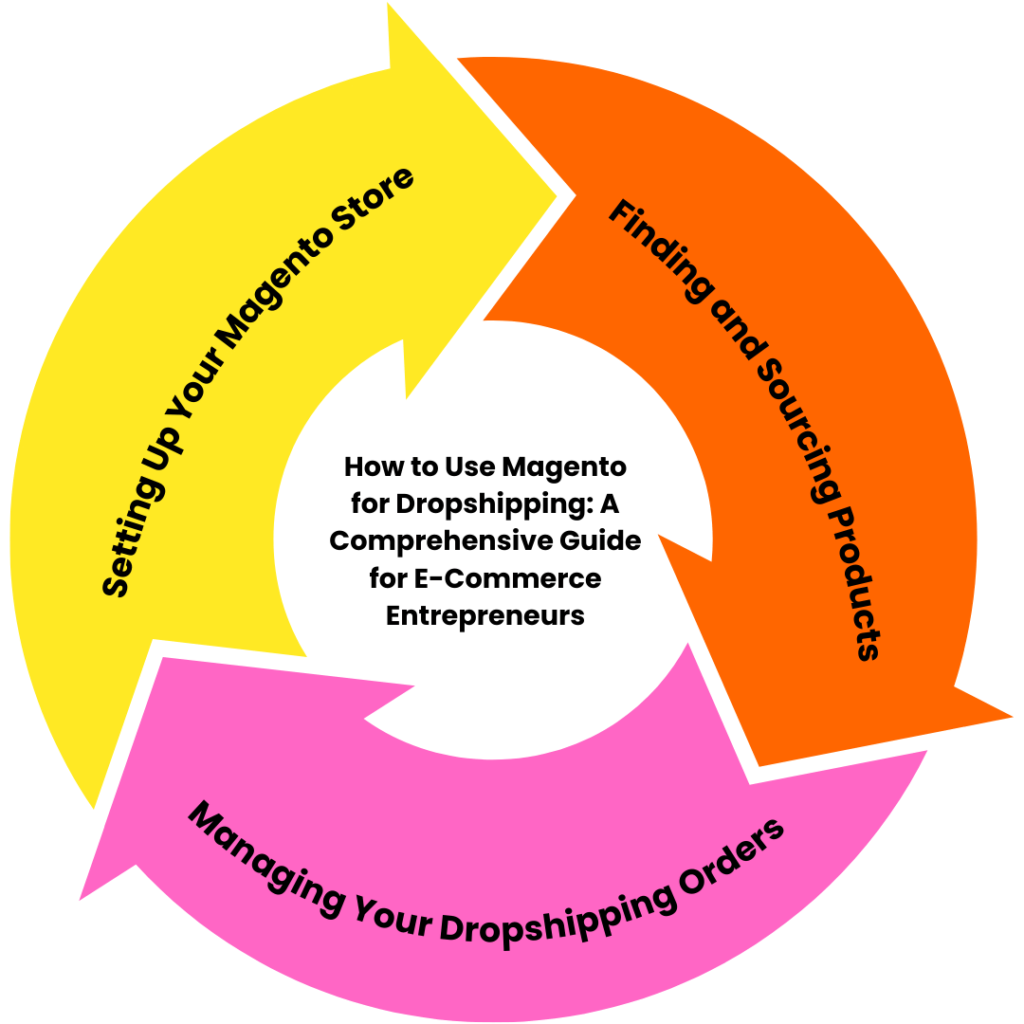Introduction
Magento dropshipping has gained significant popularity as a preferred method for e-commerce entrepreneurs to initiate their businesses effortlessly, without the burdensome task of inventory management. In Magento dropshipping, entrepreneurs establish partnerships with suppliers who directly ship products to their customers, effectively eliminating the necessity for a physical storefront or warehouse.
Magento, one of the world’s leading e-commerce platforms, is a great choice for dropshippers due to its flexibility and extensive features. In this guide, we’ll show you how to use Magento for dropshipping, including:
- Setting up your Magento store
- Finding and sourcing products
- Managing your dropshipping orders
By the end of this guide, you’ll have a solid understanding of how to use Magento for dropshipping and be well on your way to running a successful e-commerce business.
Setting Up Your Magento Dropshipping Store
The first step in using Magento for dropshipping is setting up your store. Here’s how to do it:
- Choose a Magento plan that suits your needs. Magento offers a variety of plans, including a free Community edition and several paid editions with more features. Consider your budget and business needs when choosing a plan.
- Install Magento on your web hosting server. You can either install Magento manually or use a one-click installer provided by your web host.
- Choose a theme for your store. Magento offers a variety of free and paid themes to customize your store’s design.
- Install necessary extensions for dropshipping. There are several extensions available for Magento that can make dropshipping easier, such as the Dropshipper extension or the M2E Pro extension.
- Configure your store’s settings, such as payment and shipping options. Be sure to choose a payment gateway that works with your dropshipping supplier.
Finding and Sourcing Products
Once your Magento store is set up, it’s time to start sourcing products to sell. Here are some tips for finding the best dropshipping suppliers:
- Research suppliers thoroughly. Look for suppliers with good reviews, reasonable prices, and a wide selection of products.
- Use a dropshipping directory. There are several dropshipping directories available, such as AliExpress or Oberlo, that can help you find suppliers.
- Attending trade shows and conferences. Trade shows and conferences are a great way to meet potential suppliers in person and see their products firsthand.
- Contact suppliers directly. If you have a specific product or niche in mind, you can contact suppliers directly to see if they offer dropshipping services.
Once you’ve found a supplier, you’ll need to set up a partnership with them. Here’s what to do:
- Sign up for an account with the supplier. Most dropshipping suppliers have an online application process.
- Agree on pricing and shipping terms. Make sure you understand the supplier’s pricing and shipping policies before agreeing to work with them.
- Import product data into Magento. Many dropshipping suppliers offer product data feeds that you can use to import their products into your Magento store.
Managing Your Magento Dropshipping Orders
After you’ve set up your store and partnered with a dropshipping supplier, it’s time to start managing your orders. Here’s how to do it:
- Receive orders from your customers. When a customer places an order on your Magento store, you’ll receive a notification.
- Forward the order to your dropshipping supplier. Once you receive an order, you’ll need to forward the order details to your supplier so they can fulfill it.
- Monitor the status of the order closely. Once the order has been shipped, you should receive tracking information from your supplier. It is vital to keep your customers well-informed about the progress and whereabouts of their order.
- Handle any customer service issues. If a customer has a question or concern about their order, it’s your responsibility to handle it. Be sure to communicate promptly and professionally with your customers.
- Conduct a thorough analysis of your sales data by utilizing Magento’s integrated analytics tools. By tracking your sales data and identifying trends, you can make well-informed decisions regarding product inventory and pricing strategies.
FAQs About Magento Dropshipping
Q: Do I need to have a physical storefront or warehouse to use Magento for dropshipping?
A: No, one of the advantages of dropshipping is that you don’t need a physical storefront or warehouse.
Q: How do I find reliable dropshipping suppliers?
A: Do your research and choose suppliers with good reviews, reasonable prices, and a wide selection of products. You can also use dropshipping directories or attend trade shows to find suppliers.
Q: Can I use Magento with multiple dropshipping suppliers?
A: Yes, you can partner with multiple dropshipping suppliers and manage all of your orders through Magento.
Conclusion
Using Magento for dropshipping can be a great way to start an e-commerce business without the hassle of managing inventory. By setting up your Magento store, sourcing products, and managing your orders, you can create a successful dropshipping business. Be sure to do your research and choose reliable suppliers and use Magento’s built-in analytics tools to make informed decisions about your business. With these tips, you’ll be well on your way to using Magento for dropshipping like a pro.








